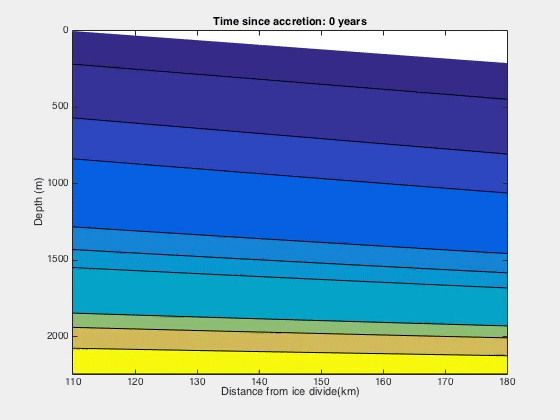Navigation auf uzh.ch
Navigation auf uzh.ch
Freeze-on of water at the ice-sheet bed can explain the occurrence of the large plume-shaped ice-bodies at the base.

Deep inside the ice-sheet, which for example covers the north of Greenland, layer structures have been detected in recent years using modern radar measurements. Now the occurrence of these large plume-shaped ice bodies could be explained by freeze-on of water at the ice-sheet bed.
Up to now scientists were puzzled about the formation and size of these spectacular features within the ice-sheet. The observed ice structures extend from the bed to up to half of the ice thickness, around a 1000 metres, and are up to a few tens of kilometres in length. Further, the radar images show clear evidence of folded ice layers around these ice bodies.
Reproduction of layer structures with a computer simulation
A team of scientists from the University of Zurich, Switzerland, and the British Antarctic Survey, England, were able to reproduce such layer structures with a computer simulation by freezing on ice at the base of the ice-sheet. The study was published in Nature Communications. They demonstrate that the size and the shape of these plume structures depend upon the interplay between ice flux and basal freeze-on rates.
With a detailed ice-sheet wide analysis the team could explain that the location of the majority of the plumes match regions where water, freely running along the ice-sheet base, is expected to freeze-on.
Implications for ice-core studies
This new study highlights that over a rugged basal topography the ice sheet can grow from the base which has implications for the wider ice-sheet community, especially for ice-core studies, as old ice is pushed upwards from the base and folded around the ice-body.
Literature:
Gwendolyn Leysinger Vieli, Carlos Martín, Richard C.A. Hindmarsh & Martin Lüthi: Basal freeze-on generates complex ice-sheet stratigraphy. Nature Communications. November 7, 2018. DOI: 10.1038/s41467-018-07083-3